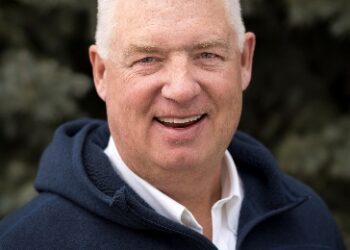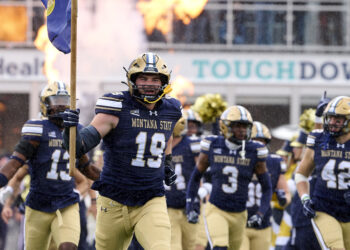Local students receive approval to get Big Sky’s first electric bus
By Barbara Rowley EBS CONTRIBUTOR
The Board of the Big Sky School District held a special meeting on Monday, Jan. 8, in order to consider applying for a federal Environmental Protection Agency grant that would allow the district to purchase Big Sky’s first electric buses at a 90% discount.
Lone Peak High School juniors Libby Coltea, Frieda Fabozzi and Addy Malinowski, founders of Big Sky Students for SNO, have championed the e-bus idea and the grant, and presented to the board information documenting the health impacts, climate benefits and economic viability of converting to e-buses.
Malinowski first detailed the health impacts of diesel exhaust for the board, including “causing asthma in kids and adults, and creating lung and heart problems.” Electric buses have no exhaust, and can even be operated on solar-powered chargers, eliminating their carbon emissions, a fundamental goal of the EPA grant.
School buses are the nation’s largest public transportation fleet—nearly three times bigger than all other forms of mass transportation combined—and account for emitting nearly five million tons of carbon into the atmosphere annually, which is why the federal government allocated $5 billion for the Clean School Bus Program.
Because school buses have limited daily range, they are particularly well-suited for electric operation. But their cost—$350,000 to $400,000—is a significant downside. Coltea said the grant would allow Big Sky to purchase a bus and charger for $35,000, removing this obstacle. In addition, the buses offer a significant expense reduction, including the reduced cost of fuel—electricity is about a quarter as costly—to less than half the annual cost in maintenance. As a result, she said, a $35,000 electric bus would “pay for itself in four years.” These savings increase over the life of a bus, Coltea added, which she said is typically about 16 years.
Malinowski then addressed two concerns from Board Chair Loren Bough and Superintendent Dustin Shipman about the use of the buses in higher altitude and lower temperatures.
Malinowski explained that some of Big Sky’s peer communities—Aspen, Vail, Breckenridge, Steamboat Springs—which are often much higher in altitude and can be equally cold, have growing fleets of both electric community public transit buses and electric school buses. In Montana, Libby, Choteau, Fairfield and Havre are all operating electric school buses; Havre is adding more this year, having reported success running the buses in temperatures as low as 30 degrees below zero Fahrenheit, and pleased with their quiet and reliable operation.
The students also addressed battery life, another common concern about electric vehicles. Malinowski said e-buses can travel 135 miles on a single eight-hour charge. With Big Sky’s daily bus routes spanning less than 40 miles, the buses could be charged every two to three days. They could also easily make it to Bozeman or West Yellowstone and back. “If we chose to buy an extra battery for an additional $40,000, they could go twice as far—all the way to Choteau,” Malinowski said.
The school board then voted to approve adding the district to a multi-school grant. Although the school has two daily bus routes, the board chose to request only one bus and charger.
The district will find out if the grant is approved in early May. If approved, an electric bus could be carrying up to 78 students in quiet, clean-air and climate-friendly comfort as early as December 2024.














